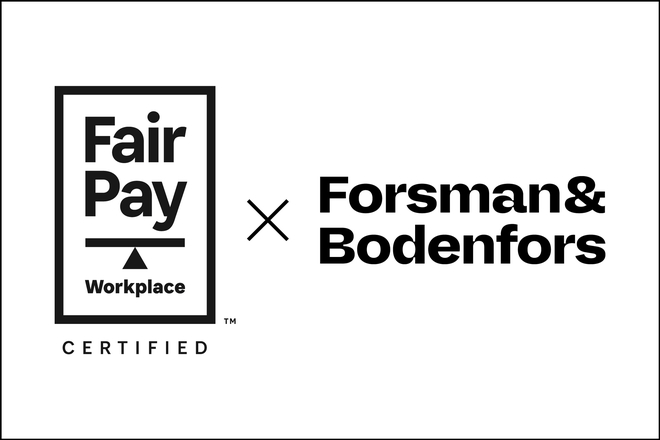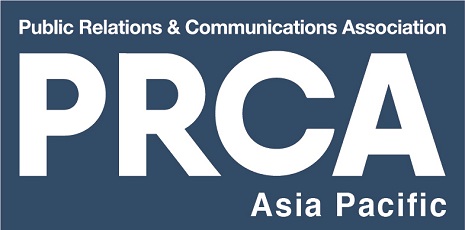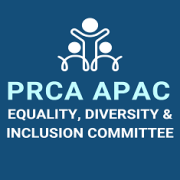The simple truth about gender pay inequity in adland
This article was originally posted on Campaign’s website.
Should companies relying on employee meet-ups, happy hours and Taco Tuesdays to create a good working culture instead shift their focus to fair pay regardless of gender, race or ethnicity?

Photo: Shutterstock
Most people are keenly aware of the gender pay gap. Statistics from a 2020 The Korn Ferry Global Gender Pay Index study reveal that on average, women are paid 15% less than men. In Poland, women earn 91 cents to every dollar a man earns. In Israel and the United States, it is 81 cents. In South Korea, it is just 65 cents. The figure is worse in growing markets like China, India, Vietnam, and Cambodia. In a lifetime and in retirement, this wage gap is magnified. But that’s just the tip of the iceberg.
The gender pay gap, and the implications on female career progression and treatment at the workplace, is a pervasive and persistent problem that shows no signs of abating.
As many reports and studies have shown, the ad industry is in no way immune.
Though women drive up to 80% of consumer spending, they remain grossly underrepresented in the advertising industry. Women account for 46% of overall advertising workers, but as careers progress, they represent only a sliver of the top leadership. A Creative Equals survey done in February 2020 in the UK reveals barely 12% of women of colour working in adland are in senior roles (head of department or creative director upwards), with that figure dropping to 6% when it comes to black women.
That’s not all. Though we’re decades on from the testosterone-fuelled Mad Men era, still a 2016 survey highlighted that more than half of all women in advertising have experienced sexual harassment at some point and it makes them feel vulnerable.
And what does it mean to feel vulnerable at work?
“It means women get used to facing bias on a regular basis and it is so rampant that it takes a while before it actually sinks in,” explains Charu Srivastava, chair of PRCA APAC Equality, Diversity and Inclusion Committee.
A lot of gender bias can be culled with pay equity, says Rania Robinson, president of WACL (Women in Advertising and Communications Leadership), also the CEO and partner of Quiet Storm Advertising. Recounting her own experiences in the initial years, says: “The organisation I worked at after having my first child reeked of implicit and explicit gender bias. Returning from maternity leave, women were left out of pitches, important accounts and marginalizsed to such an extent that many chose to exit. I went freelance too because I didn’t see any other option at the time.”
Pay equity is a black box
To address this gaping gender-based inequity, Stagwell’s Forsman & Bodenfors (F&B) has done something remarkable: The 700-strong agency has become the first creative shop in the world to be certified by the Fair Pay Workplace for gender pay equity, having proved pay equity in every country and office where it operates.
“The most exciting thing is how it impacts our people on an individual level, and also collectively as an agency,” remarks Po Kay Lee, F&B Singapore’s president. “Committing to equal pay for equal work; this is who we are now. There’s no going back from this, and I love the clarity that provides us as we continue to strive and build an agency that is a progressive, creative, and a great place to work.”

Forsman & Bodenfors became the first agency to be globally certified by The 3% Movement for pay equity. Photo: F&B
So, what exactly is gender pay equity, you ask?
“Equal pay for equal work regardless of gender, race, or ethnicity” explains Anish Daryani, founder, M&C Saatchi Indonesia.
Michele Prota, F&B’s global chief talent officer, considers pay equity “as table stakes for a whole host of critical problems.” In her view, issues of quiet quitting, the Great Resignation, and the overall inability of companies to retain talent stem from pay inequity.
“Employees are the most expensive line item for any agency. Companies should figure out how they are valuing their people, and whether it is independent of their background, gender or race. Are employees being paid fairly and equally and are they moving in the right direction to cultivate good culture in the organisation?” she adds.
Work culture is critical to F&B’s brand purpose. In 2019, the Sweden-headquartered agency with offices in Stockholm, New York, Toronto, Montreal, Shanghai and Singapore was certified by The 3% Movement for its efforts to retain and promote women. Overall, 61% of its employees identify as female, as does 57% of its executive leadership team.
It’s no rocket science that culture impacts productivity and performance.
A 2019, Grant Thorton research found that companies mostly get it wrong when investing strategically on culture—they spend money on things and policies that don’t matter for true wellness and don’t contribute to culture ROI.
“Culture is not happy hours, Taco Tuesdays, events and trainings,” says Anish Daryani, founder of M&C Saatchi Indonesia. “Those things are nice for team bonding, but true culture is providing a safe space for employees to be their authentic self; it’s about how people feel when they come to work and the sense of pride and belonging they have with their work family.”
Is fair, equitable pay the way to achieve that?
Kat Gordon, founder of The 3% Movement, a group born in 2012 because at the time only 3% of creative directors in the advertising industry were women, says that “culture is the new creativity”. In fact, Gordon uses that line in her email signature as well. “What I am alluding to is corporate culture,” she remarks.
“The drum I beat is about belongingness: we are social mammals; we need to feel connected; we need to feel safe and seen. One of the most potent ingredients in that recipe is equitable pay—when we’re paid equally and fairly—we are happier, we’re more productive, there is a sense of belonging and employees want to stay where they are.”

(Clockwise from top: Michele Prota (F&B), Anish DAryani (M&C Saatchi Indonesia), Rania Robinson (Quiet Storm Advertising), Maria Colacurcio (Syndio), Charu Srivastava (PRCA APAC), Po Kay Lee (F&B Singapore)
Pay equity critical in employee retention?
In August, tech giant Microsoft made two important announcements: a hiring freeze and a sweeping pay hike along with stock-based compensation to lure and retain top talent. Amid soaring inflation, a highly competitive and a fluid labour market, Microsoft figured it in their best interest to focus on plugging attrition. What spurred the move was perhaps a similar strategy adopted by Amazon earlier in the year to more than double its maximum base pay for corporate and tech workers capped at US$350,000.
“These are interesting power moves in very uncertain times,” says Maria Colacurcio, a mom of seven and CEO of Syndio, a SaaS startup helping companies around the world create an equitable workplace for all employees. She explains the importance of these strategies: Companies are realising we are in a very new playbook. Economic markets are tight, evaluations are coming down by 40 and 50% and HR is trying hard to figure out how to pull back yet absolutely must retain talent because if those best people walk out, the cost of onboarding and training new hires is massive.
One of the best ways to control retention according to Colacurcio is “to engage and invest in your people with a cycle of trust and transparency. Employees should have the trust at the core that they are being valued and not discriminated with something so intrinsic as their gender.”
Something doesn’t add up: Where are the APAC statistics?
Unfortunately, in Asia, there are no industry metrics to measure pay equity or tangible laws which push agencies for greater wage transparency. Clamping down on gender and other wage gaps is an uphill task when companies are not shedding light on their pay practices.
“We don’t know what’s happening behind closed doors. It’s quite sad, really. Without the knowledge of industry-wide pay standards, there is no benchmark to measure our gains or losses against; it is all in the dark at the moment,” quips Srivastava.
Currently, the best efforts come from the UK where government data reveals that 13 out of 48 large ad agencies in England, Scotland and Wales that provided figures had a median pay gap—the difference in the midpoints of male and female pay ranges—of at least 25% in 2020-21. The UK’s overall gender pay gap stood at 15.5% for 2020, according to the Office for National Statistics.
“Pay transparency is not a fad, or a trend pushed by millennials and Gen Zs. Pay equity is directly linked to culture, retention, and attrition. It’s the make or break for employees today,” says Colacurcio.
Pay transparency creates accountability, according to Betsy Friedman, the global CFO of Forsman & Bodenfors. She adds that when agencies start remedying gaps, they know how dramatic the change can be.
“Once you implement pay equity, the changes will not stop at only improving culture. It will have an industry-wide impact because adland has long struggled with renumeration.”
Prota chips in: “The model of our entire industry is to quantify service—we commodify hours and put value on time spent instead of the quality we bring, well that’s not necessarily the way F&B does business but pay equity will contribute to a change in the agency-client relationship.”
Freidman elaborates: “When a client goes to an agency, the first conversation is transactional—instead of talking creative solutions, the initial discussions are around ‘what is your rate card, what are the overheads?’ Why are we discussing the number of hours and rate cards instead
of what we can offer? I believe with pay equity we have transparency and trust. Perhaps, instead of pricing, discussing commercials and inputs, we can manoeuvre the conversation with clients toward output, transparency, and business.”

Why are others not implementing it?
Pay equity sounds non-negotiable and an easy talent retention strategy, so why are other agencies slow to follow in F&B’s footsteps and implement a fair pay certification?
“Well, it might open a Pandora’s box of issues,” says Srivastava. “Equity starts with transparency and right now we don’t have open, holistic conversations about salaries at all. People jump jobs for wage growth, imagine if a company loses top talent because their employees ‘think’ they are drawing lesser than industry standards? Wouldn’t it be great if job posts had salaries advertised so everyone knows their worth and then evaluates if in the greater scheme of things, it is sensible to jump for a mere 10-15% or not?”
As part of F&B’s Fair Pay Workplace certification, expressing salary ranges in job postings is the next step.
A 2021 Gartner study finds that at current rates, achieving gender-based pay equity is at least 30 years away. “We need a revolution, not evolution to achieve it”, the report sites.
Daryani of M&C Saatchi Indonesia opines that for bigger networks with offices in 40 or 50 countries, a universal certification can be a logistical nightmare. “
A lot has changed over the last few years; agencies are getting serious about their DEI initiatives. But when you are a bigger network, a certificate like this can be a massive restructuring exercise. Sometimes it is not the lack of will or transparency, there might be a lack of commitment to additional organisational work,” he chimes.
At one point, Daryani was himself at the receiving end of glaring pay inequity on grounds of race. In his view, gender equality and true inclusion can be fulfilled and measured in various ways not just by a certificate or a stamp.
In 2020, Daryani implemented a strict internal fair-wage policy. This has inevitably led to a healthy ratio of genders at his organisation with 59% of managerial and above positions filled by women, 41% by men. In 2021, the team consisted of 51% men, 49% women.
If not pay equity, what entails an equitable workplace?
From the time Kat Gordon started The 3% Movement, female representation in top leadership has jumped from 3% to nearly 12% in the US. Sadly, there are no such comparable figures available for the APAC region but you see the gaping disparity in top female leadership?
So, if not pay equity, what does true inclusion at workplace look like?
WACL’s Robinson says: “Equal pay is key for me but also equal representation in top-ranking roles. And representation should be diverse—not only straight, white women from affluent socio-economic backgrounds.”
Srivastava adds: “Scrap the ‘last earned salary’ question when hiring. Why penalise women for taking breaks for motherhood or any person for playing the role of a caregiver? So what if there is a four or a five-year career gap: pay according to the skillset the talent brings to the table and not according to the figures on their last pay cheque.”
Charu Srivastava is the deputy managing director at Redhill and chair of PRCA Asia Pacific equality, diversity, and inclusion committee.
Source: Campaign

